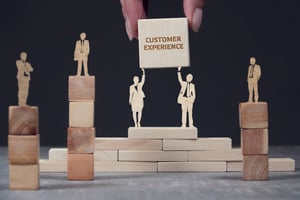I have been in the CX industry as a practitioner, vendor, independent consultant, and on the board...
Who Owns the Customer Experience?
If you have come across this blog, you probably have heard of the term CX. A term that has been building steam in recent years since its inception in 2010. Here I am going to talk about what CX is and why it is important.
First let’s start with the basics
Back in 2010, Forrester, a leader in customer-centric research defined CX, which is short for Customer Experience, as “how customers perceive their interactions with your company” and this definition is still relevant today.
Why is it important?
Just looking at the bottom line, an investment in CX can double your revenue within 36 months and nearly 90% of customers are willing to pay more for a great customer experience. (Source: 37 Customer Experience Statistics you Need to Know for 2020). If a company understands what its customers are doing and saying about their interactions, the company can work to improve that experience. A better experience leads to more loyalty and more business.
Sounds simple doesn’t it?
But it isn’t simple because the customers’ journey with a particular company is never simple.
Customers go through so many touch-points in their journey with a company. Say for example, if a customer wants to buy an appliance, they may research the company online, learn more about the product on the brand’s website. Once ready to purchase they will purchase online or in a store, as long as they perceive the price is right for its value. After the order has been placed, the appliance needs to be delivered. After some time, the customer may experience an issue with the product and will search online for help or contact customer support.
At any one of the steps in the journey the customer may hit a roadblock, whether the website errors out, the appliance is delivered damaged or the repairs take several visits. Each step of the way the customer will decide whether they want to continue down their journey or move on with another company. Plus, each touch-point gives the customer the opportunity to leave feedback in the form of a review, tweet, comment, chat, or call.
Listening to the customer’s voice throughout the steps in their journey can give an understanding of which parts of the process should be changed or improved.
Who does the listening?
Formulating a Voice of Customer (VoC) or Customer Experience “CX” team which is geared towards listening to the voice of the customer and generating insights on that data is a great way to start the process.
But like the customer journey mentioned above, there are many stops along the way and the associated data may sit in different departments. The market research department may administer surveys while the contact center has access to call and chat transcripts and the marketing team responds to social feedback. Oftentimes these departments do not interact with each other or at least not as often as they should.
Therefore we come back to our initial question, who owns the Customer Experience?
Ideally, the entire company should be responsible for the customer experience and have executive-led strategies where each department has an incentive to come together regularly to discuss and review customer’s feedback and experiences. But that’s not always how the company departments are set up to act on customer insights. Taking a look at our example again, the website department may not be able to improve the chat service because that is run by the support department and in turn the support department does not have the expertise to address user experiences in the website navigation that the customer may find confusing.
The Customer Experience “CX” team needs to be a central team or focus area that spans across the silos to understand the end to end business processes and department ownerships in order to ensure that they can generate actionable insights that each department can prioritize and address to improve the overall customer experience.
Regardless of the structure of your organization, the bottom line is that everyone owns the customer experience, the key is ingraining that into your culture where everyone is demanding customer feedback to drive change that increases customer, loyalty and satisfaction.
Here at Farlinium, we can help you set up your Customer Experience program for success. Let us help you build a centralized listening channel for your customers, map delight and pain points by journey and give you the tools and information you need to make the best decision that benefits your customers the most.



